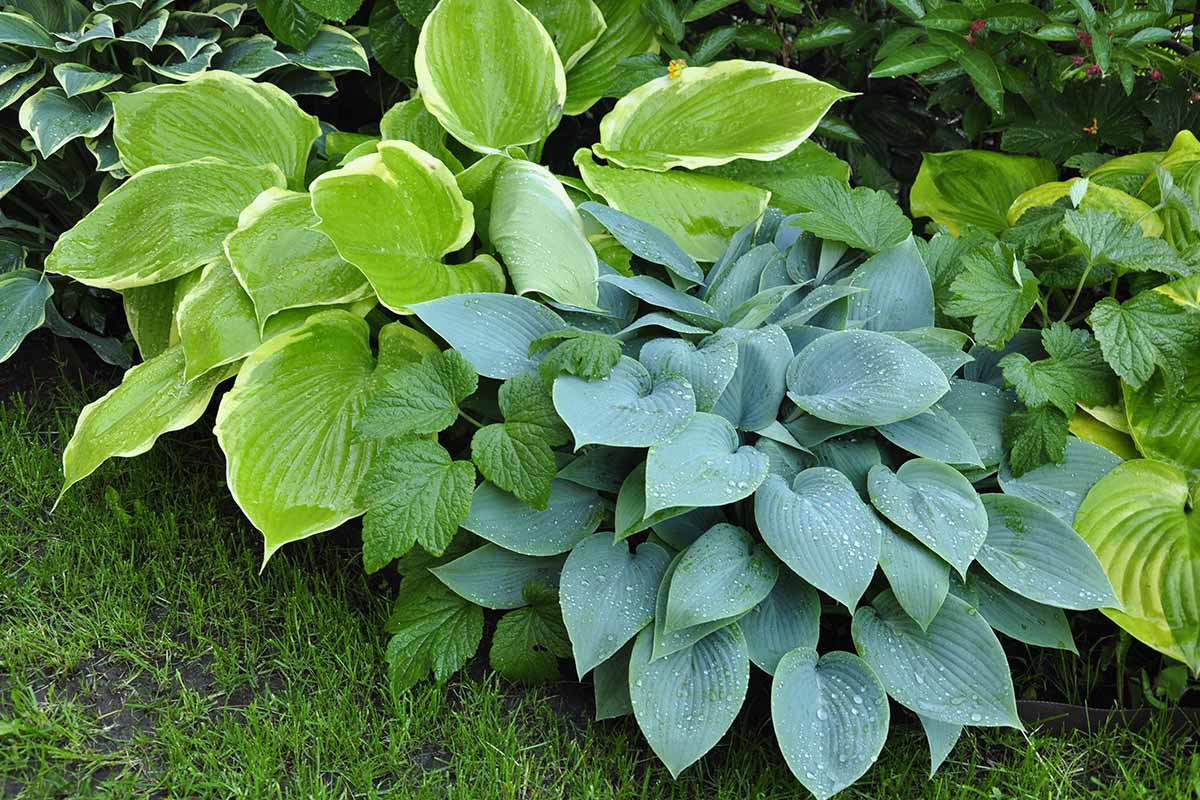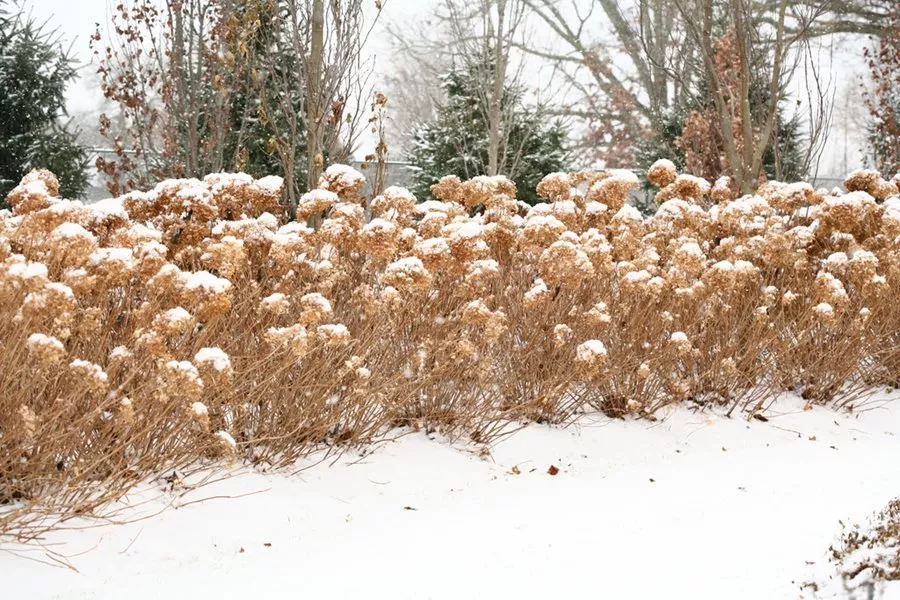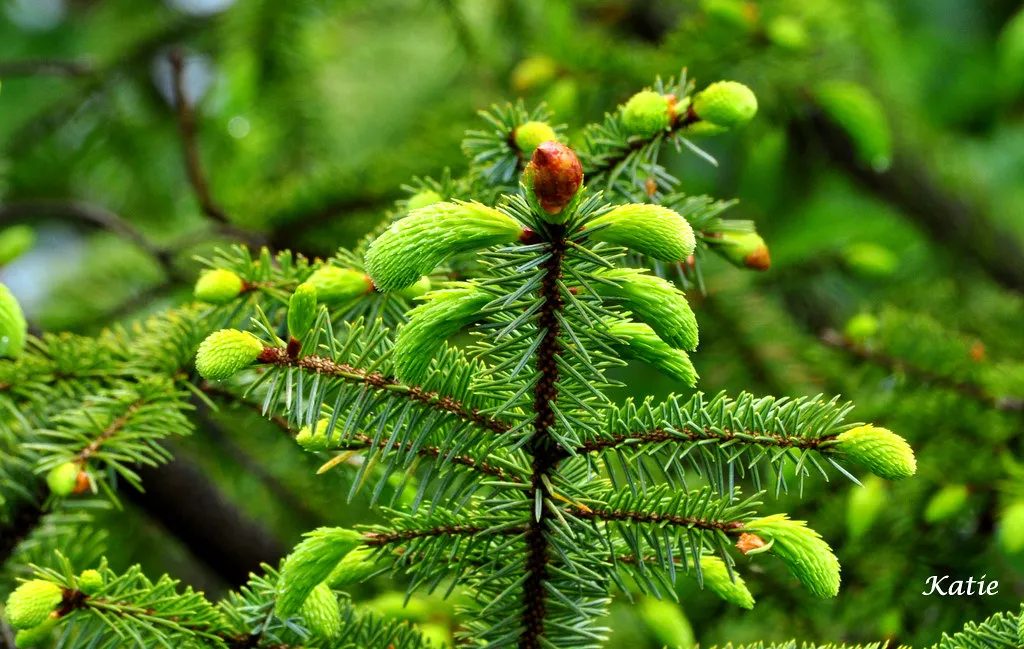To protect hostas during winter, mulch them with a thick layer of organic material. Ensure proper drainage to prevent root rot.
Hostas are popular for their lush foliage and shade tolerance. Winter can be harsh on these plants, so they require special care to survive cold months. Begin by applying a thick layer of organic mulch around the base to insulate roots and retain moisture.
Ensure the area has proper drainage to prevent waterlogged soil, which can lead to root rot. Pruning dead leaves before the first frost helps reduce disease risk. These steps will keep your hostas healthy and vibrant, ready to flourish when spring arrives. Proper winter care ensures hostas remain a stunning feature in your garden year after year.

Credit: ngb.org
Preparing Hostas For Winter
Winter can be tough on your hostas. Proper preparation is key. This ensures they survive and thrive when the cold months set in. Below are essential steps to take for preparing your hostas for winter.
Cleaning Up The Garden
Start by cleaning up the garden. Remove any dead leaves and debris. This helps prevent diseases from spreading. Use a rake to gather fallen leaves. Dispose of the collected debris properly.
Check for any signs of pests. Remove any pests you find. This keeps your hostas healthy and strong. Ensure the garden bed is clean and tidy.
Cutting Back Foliage
Next, focus on cutting back the foliage. Cut the foliage down to the ground. Use sharp, clean shears for this task. This helps the plant conserve energy during winter.
Be careful not to damage the crown of the plant. The crown is where new growth will emerge in spring. Ensure all cut foliage is removed and discarded.
Here’s a simple table to guide you:
| Task | Details |
|---|---|
| Cleaning Up | Remove dead leaves, debris, and pests |
| Cutting Back Foliage | Cut foliage down to the ground, avoid the crown |
Follow these steps to ensure your hostas are well-prepared for winter. They will thank you with beautiful growth come springtime!

Credit: gardenerspath.com
Mulching For Protection
Hostas need special care during the cold months. One effective method is mulching. Mulching can protect your hostas from harsh winter conditions. It provides insulation and helps retain moisture. Let’s explore how to use mulch effectively.
Choosing The Right Mulch
Choosing the right mulch is crucial for protecting your hostas. The best types include:
- Straw – Offers excellent insulation and is easy to spread.
- Leaf Mulch – Affordable and rich in nutrients.
- Pine Needles – Great for acidic soil environments.
- Wood Chips – Long-lasting and effective for weed control.
Proper Mulching Techniques
Proper mulching can make a big difference. Here’s how to do it:
- Clear Debris – Remove fallen leaves and dead plant material.
- Apply Mulch – Spread a 2-3 inch layer around your hostas.
- Avoid the Crown – Keep mulch a few inches away from the plant’s crown.
- Water Well – Ensure the soil is moist before applying mulch.
- Monitor – Check mulch periodically and replenish if necessary.
Mulching is an essential part of winter care for hostas. It protects them from cold and helps retain moisture. By choosing the right mulch and applying it correctly, you can ensure your hostas thrive even during the coldest months.
Watering During Winter
During winter, protecting your hostas is crucial. Watering plays a key role. It’s important to understand how to water them correctly. Let’s dive into the specifics.
When To Water
Knowing when to water your hostas is vital. Water them before the ground freezes. This helps the roots store water for the cold months. Avoid watering during heavy frost or snow. It can harm the plants.
How Much To Water
How much water your hostas need is also essential. During winter, they need less water. Overwatering can lead to root rot. Aim for moist but not soggy soil. Monitor the soil moisture regularly.
| Watering Period | Amount |
|---|---|
| Before Ground Freezes | 1-2 inches |
| During Winter | Minimal, as needed |
- Check soil moisture weekly.
- Water if soil feels dry.
- Avoid watering during frost.
Use a watering can or hose with a gentle setting. This prevents soil erosion. Ensure the water reaches the roots. Happy gardening!

Credit: www.amazon.com
Preventing Frost Damage
Winter can be harsh on your hostas. Frost damage is a major concern. Protecting your hostas ensures they thrive in spring. Here are some effective methods to prevent frost damage.
Using Frost Blankets
Frost blankets are a great way to shield your hostas. They provide an extra layer of insulation. You can find these blankets at garden centers. Follow these steps to use frost blankets effectively:
- Cover your hostas with the blanket before frost hits.
- Ensure the blanket touches the ground to trap heat.
- Secure the edges with rocks or stakes.
The key is to cover the plants completely. This helps in maintaining a stable temperature. It also prevents frost from settling on the leaves.
Timing The Protection
Timing is crucial for protecting your hostas. Start monitoring weather forecasts in late fall. When frost is predicted, it’s time to act. Here’s a simple guide to ensure your timing is perfect:
- Keep an eye on the first frost date in your area.
- Cover your hostas a day before the expected frost.
- Remove the covers during the day if the temperature rises.
By timing your protection efforts, you can avoid unnecessary damage. This approach ensures your hostas remain healthy throughout the winter.
Controlling Pests
Winter can be a challenging time for your hostas. Even in the cold, pests can cause damage. Protecting your plants from these pests is crucial. This section will help you identify common winter pests. You will also learn natural methods to control them.
Common Winter Pests
During winter, hostas can attract several pests. Here are the most common ones:
- Slugs and Snails: These pests love moist environments. They can eat holes in your hosta leaves.
- Voles: Voles are small rodents. They can chew on the roots and crowns of your plants.
- Deer: Deer can be a problem even in winter. They nibble on the leaves and stems.
Natural Pest Control Methods
Using natural methods to control pests is safe and effective. Here are some tips:
- Mulch: Spread a thick layer of mulch. This can deter slugs and snails.
- Garlic Spray: Make a garlic spray to repel deer. Spray it on and around your hostas.
- Traps: Use traps to catch voles. Place them near your hostas.
Here’s a quick reference table for natural pest control:
| Pest | Control Method |
|---|---|
| Slugs and Snails | Mulch |
| Voles | Traps |
| Deer | Garlic Spray |
Following these steps can keep your hostas safe. Your plants will be ready to thrive in spring.
Avoiding Overwintering Diseases
Winter can be harsh on your hostas. Protecting them from diseases is crucial. Below, we discuss how to avoid overwintering diseases in your hostas.
Identifying Common Diseases
Hostas are prone to several diseases during winter. Knowing the signs helps in taking quick action.
- Gray Mold: Look for fuzzy, gray spores on leaves.
- Leaf Spot: Watch for brown or black spots on foliage.
- Crown Rot: Check for soft, mushy crowns.
Preventive Measures
Preventing diseases is better than curing them. Follow these steps to keep your hostas healthy during winter.
| Action | Details |
|---|---|
| Clean Up | Remove dead leaves and debris around hostas. |
| Mulching | Apply a layer of mulch to protect roots. |
| Watering | Water sparingly to avoid root rot. |
| Spacing | Ensure plants are not overcrowded. |
| Inspect Regularly | Check plants frequently for signs of disease. |
Spring Recovery
As winter gives way to spring, your hostas will start to wake up. This period is crucial for their health and growth. Proper spring recovery ensures they thrive throughout the year.
Removing Mulch
Hostas need protection during winter. Mulch provides insulation. As temperatures rise, it’s time to remove the mulch.
Follow these steps:
- Wait until the last frost has passed.
- Gently remove the mulch layer by layer.
- Avoid damaging emerging shoots.
Removing mulch too early can expose hostas to frost damage. Be patient and observant.
Gradual Reintroduction To Sunlight
Hostas thrive in shaded areas. Direct sunlight can harm them. Gradually reintroduce your hostas to sunlight.
Here’s how:
- Start by exposing hostas to morning sun for an hour.
- Increase exposure by 30 minutes each day.
- Monitor leaves for signs of sunburn.
Gradual exposure helps prevent shock and promotes healthy growth. Your hostas will adapt and flourish.
With these steps, your hostas will recover well. They’ll be ready to grow beautifully in the spring.
Additional Tips
Winter can be harsh on your hostas. Proper care during the cold months ensures they stay healthy. Here are additional tips to keep your hostas safe.
Monitoring Weather Conditions
Keeping an eye on the weather helps protect your hostas. Sudden changes in temperature can harm them.
- Check the weather forecast daily.
- Look out for frost warnings.
- Prepare for unexpected snowfalls.
Use a weather app for real-time updates. This helps you act quickly.
Using Protective Structures
Protective structures can shield your hostas from extreme weather. They provide insulation and keep the plants warm.
| Structure | Benefit |
|---|---|
| Mulch | Retains soil moisture and warmth. |
| Row Covers | Protects from frost and snow. |
| Cold Frames | Offers a controlled environment. |
Use mulch around the base of the plant. This keeps the roots warm. Row covers and cold frames offer additional protection.
Ensure structures are secure. Strong winds can dislodge them. Check regularly to make sure they are intact.
Frequently Asked Questions
How Do I Prepare Hostas For Winter?
To prepare hostas for winter, cut back the foliage after the first frost. Mulch the soil to protect the roots. Water well before the ground freezes. Avoid overwatering.
Should I Mulch Hostas In Winter?
Yes, mulching hostas in winter helps insulate the roots. Use organic mulch, like leaves or straw. Apply a 2-3 inch layer.
Can Hostas Survive Winter Without Protection?
Hostas can survive winter, but protection improves their health. Mulching and cutting back foliage helps prevent damage. Proper care ensures strong growth in spring.
When Should I Cut Back Hostas?
Cut back hostas after the first hard frost. This helps prevent disease and prepares the plant for dormancy. Use clean, sharp tools.
Conclusion
Ensure your hostas survive winter by following these care tips. Mulch, proper watering, and protection are key. With these steps, your hostas will thrive. Remember, a little effort now saves them from harsh weather. Enjoy beautiful, healthy hostas year-round by taking these precautions during the cold months.
Happy gardening!



